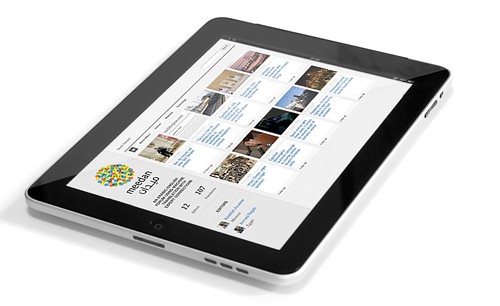We language teachers know that learning a foreign
language involves many different aspects. Besides mastering the structure of
the language and acquiring the necessary vocabulary to be able to communicate,
learners have to be exposed to other features of the language in order to
assimilate it in a more holistic manner.
Among the various issues a language program should
deal with, the study of culture is a very important one. As Harmer points out,
By the end of the twentieth century, English was
already well on its way to becoming a genuine lingua franca, that is a language used widely for communication
between people who do not share the same first (or even second) language. (HARMER, 2007, p. 13)
Therefore, teachers should keep in mind that
culture and language teaching are intertwined and should not be taught
separately, for twenty-first century students need to develop their
international communication skills.
Nevertheless, although most teachers know the
importance of addressing this topic, they tend to overlook the cultural facets
a lesson may bring, and many are the reasons they encounter to justify their
choice for not doing so. The most common ones are the lack of time due to the
complex school syllabus and their own lack of knowledge of the topic.
 |
| http://www.flickr.com/photos/yavuzcan/tags/people/ |
Having identified that, we two, as teacher trainers, felt motivated to conduct research on this topic in order to help other teachers
become aware of their tasks as purveyors of multiculturalism and also to
motivate and encourage them to explore the various cultural aspects present in
their lessons.
We then realized that an important question surrounds teachers
as they plan their lessons – whose culture should we address? Snow ponders that
As you consider the issue of culture in English
language courses, you may tend to think first and foremost of U.S. and British
culture, but with a little reflection it is clear that neither of these terms
is fully satisfactory as a label for the kind of culture most closely
associated with English. (SNOW, 2007, p. 205)
In the globalized culture era, taking multiculturalism into account when planning lessons is imperative. Snow also highlights that
In today’s world, the growing global role of English
means that students may need to use English not only for communicating with
people from English-speaking countries but also for communicating with people
from many other nations and cultures. (SNOW, 2007,
p. 211)
With that in mind, the first step to be followed is
to spot the cultural themes a lesson may bring. Some lessons present topics in
a very overt way, making it easier for teachers to explore them. Moran states
that:
… explicit forms of cultural expression, such as
perceptions, beliefs, values, and attitudes can be explicitly stated in oral or
written form. Therefore, being able to identify any of these themes within a
lesson may be the gateway to incorporate cultural subjects into the learning
environment. (MORAN, 2001, p. 75)
However, some lessons don’t present evident
cultural spots to be explored. That’s when the teacher should analyze them more
carefully in order to set a link between the core of the lesson and the globalized
world, stressing the importance of addressing and respecting cultural
diversity. For instance, any grammar topic can be worked on through examples
that contain multicultural information; most listening and reading
comprehension tasks can be linked to the students’ personal experiences, as
well as to the students’ cultural background; speaking activities can be used
as opportunities to demystify stereotypes.
The use of realia
As you can see, various activities can be developed
for that purpose. The use of realia, for example, is a great option, for
students truly enjoy novelty. A discussion about where such an object comes
from, what it’s used for, and how people from different countries would take
advantage of it can be a simple but involving activity. Also, as Snow (2007, p.
209) mentions, magazines, newspapers, travel guides, maps, souvenirs are
valuable resources that can be used in a variety of ways as a vehicle for
allowing students to learn about the cultures of other nations.
Research projects
Another form of tackling culture is through the
encouragement of research projects.
Having set a link between the lesson topic and culture, the teacher can inspire
students to find out more about other countries and their cultures. Students
should visit the library, surf the net, and even try to meet foreigners that
could share ideas with them. After conducting some research, students should
present the results to their classmates or write a report about it. This
experience will undoubtedly raise students’ cultural awareness, broadening
their understanding of diversity and polishing their international
communication skills.
Authentic materials
The printed and visual media are also of a great
help when it comes to incorporating culture into the EFL lesson. Besides helping
build the reading and listening skills, books, films, and radio broadcasts provide
a great deal of cultural knowledge input. Thus, teachers should make use of
this rich material to explore both historical and contemporary cultural and
social issues. Pairwork and groupwork
activities can be designed to generate discussion about the material studied,
always emphasizing the need of respecting diversity.
Critical-incident exercises
The integration of cultural themes into the lesson
also plays an important role in the development of intercultural competence. Some
activities are proposed by Snow (2007, p. 213) to serve that purpose. He names
one of them as critical-incident
exercises, which are “useful for encouraging students to be more careful
and think more broadly as they interpret the behavior of people from unfamiliar
cultural backgrounds.” Critical-incident
exercises consist of two basic parts:
11)
a story in
which people of different cultural backgrounds have a communication problem;
22)
a discussion
question that invites students to analyze the incident and attempt to arrive at
a better understanding of why the problem occurred.
Snow states that
these exercises are a good springboard for
discussion of cultural differences, especially differences in beliefs and
values. They also help students develop a number of very basic but important
intercultural communication skills and habits:
-
They help students become more consciously aware of the processes by
which they interpret the behavior of foreigners;
-
They encourage students to pause and think rather than jumping rapidly
to conclusions;
-
They help students build the habit of considering a broad variety of possible
explanations of behavior that seems strange or problematic rather than stopping
with obvious, kneejerk interpretations. (SNOW, 2007, p.213)
These are only a few suggestions on how to make culture themes present in
EFL classes. As Brown (2007, p. 133) states, “a language is part
of a culture, and a culture is part of a language.” Once teachers are aware of how much culture
surrounds their day-to-day classroom routines, they will be able to come up with a number of ideas on how
to culturally enrich their lessons through the use of practical and
straightforward activities.
References:
BROWN, H. D. Teaching by Principles: An interactive approach to language
pedagogy. 3rd ed. New York: Pearson Education, 2007.
HARMER, J. The Practice of English Language Teaching. 4th ed.
Cambridge: Pearson Longman, 2007.
MORAN, P. R. Teaching Culture: Perspectives in Practice. Boston: Heinle
Cengage Learning, 2001.
SNOW, D. From Language Learner to Language Teacher: An introduction to
teaching English as a foreign language. 1st ed. Alexandria: TESOL,
2007.





























